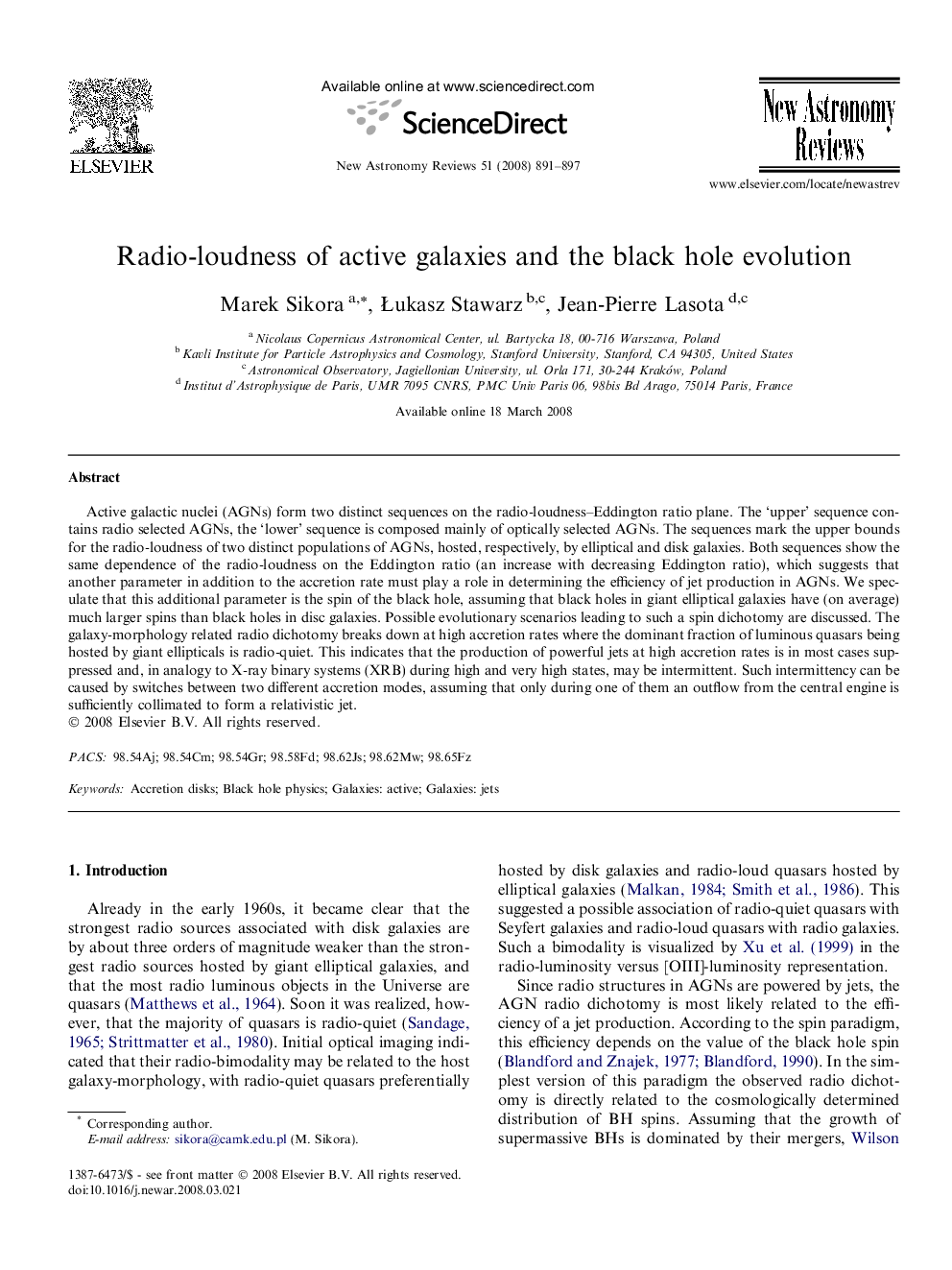| Article ID | Journal | Published Year | Pages | File Type |
|---|---|---|---|---|
| 1780168 | New Astronomy Reviews | 2008 | 7 Pages |
Active galactic nuclei (AGNs) form two distinct sequences on the radio-loudness–Eddington ratio plane. The ‘upper’ sequence contains radio selected AGNs, the ‘lower’ sequence is composed mainly of optically selected AGNs. The sequences mark the upper bounds for the radio-loudness of two distinct populations of AGNs, hosted, respectively, by elliptical and disk galaxies. Both sequences show the same dependence of the radio-loudness on the Eddington ratio (an increase with decreasing Eddington ratio), which suggests that another parameter in addition to the accretion rate must play a role in determining the efficiency of jet production in AGNs. We speculate that this additional parameter is the spin of the black hole, assuming that black holes in giant elliptical galaxies have (on average) much larger spins than black holes in disc galaxies. Possible evolutionary scenarios leading to such a spin dichotomy are discussed. The galaxy-morphology related radio dichotomy breaks down at high accretion rates where the dominant fraction of luminous quasars being hosted by giant ellipticals is radio-quiet. This indicates that the production of powerful jets at high accretion rates is in most cases suppressed and, in analogy to X-ray binary systems (XRB) during high and very high states, may be intermittent. Such intermittency can be caused by switches between two different accretion modes, assuming that only during one of them an outflow from the central engine is sufficiently collimated to form a relativistic jet.
